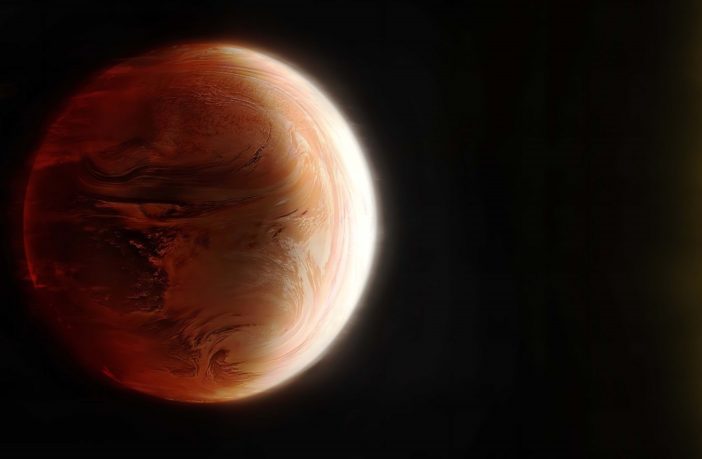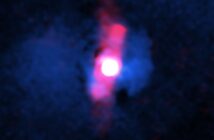A group of astronomers, including Joanna Barstow from The Open University and experts from the Max Planck Institute for Astronomy (MPIA), have examined the atmosphere of a ‘hot Jupiter’ exoplanet, discovering how water changes physical state between day and night.
Using the Hubble Space Telescope, an international collaboration of scientists led by Thomas Mikal-Evans from MPIA investigated the atmospheric properties of the hot Jupiter ‘WASP-121b’ and the changes that took place at night.
They discovered that while airborne metals and minerals evaporate on the hot dayside, the cooler nightside features metal clouds and rain made of liquid gems. The research, published in Nature Astronomy, is a big step in deciphering the atmospheres of exoplanets (planets outside of our solar system).
Hot Jupiters are Jupiter-like giant gas planets in close orbits around their parent stars. The radiation from the star heats the planet, sometimes up to a few thousand degrees Celsius. Of the almost 5000 known exoplanets, more than 300 are such hot Jupiters, like WASP-121b.
Astronomers had discovered this particular exoplanet in 2015 in the constellation ‘Puppis’ at a distance of 855 light-years.
“It’s really exciting to finally see the dark side of a planet like WASP-121b, and to actually observe the atmosphere behaving in the way models predicted,” said Dr Jo Barstow, Ernest Rutherford Research Fellow at The Open University, who produced a set of atmospheric models that were compared with the observations. “We now know more about how planets behave under extremely hot conditions.”
The team has secured observation time on the newly-launched James Webb telescope to carry out further research into WASP-121b.
Dr Barstow added, “This type of observation is at the limit of what the Hubble Space Telescope can achieve, so we are only scratching the surface so far. We are very fortunate to have been awarded time on the James Webb Space Telescope to study this planet further, so we can expect even more exciting results in the near future.”
Exploring an exoplanet’s environment
The new observations allowed the astronomers to gain the most detailed insight yet into the conditions of an exoplanet’s nightside hemisphere and by merging the data from the dayside and nightside hemispheres, the team’s analysis leads to the first elaborate view of how an exoplanet atmosphere functions.
The group probed the upper atmosphere of WASP-121 b across the entire planet and, in doing so, observed the complete water cycle of an exoplanet for the first time.
On Earth, water constantly changes its physical state: solid ice melts into liquid water, water evaporates into a gas and then condenses into droplets to form clouds. The cycle closes when those droplets grow to raindrops that eventually fall down to fill rivers and oceans. However, the water cycle on WASP-121b looks completely different.
On the side of the planet facing the central star, the upper atmosphere becomes as hot as 3000 degrees Celsius. At such temperatures, the water begins to glow, and many of the molecules even break down into their atomic components.
The research also revealed that the temperature drops by approximately 1500 degrees Celsius on the nightside hemisphere. This extreme temperature difference between the two hemispheres gives rise to strong winds that sweep around the entire planet from west to east. Temperatures never drop low enough for water clouds to form throughout the cycle, let alone rain.
Raining gems
Instead of water, clouds on WASP-121 b mainly consist of metals such as iron and magnesium. The astronomers discovered that temperatures drop low enough for the metals to condense into clouds at night.
Strangely, aluminium and titanium were not among the gases detected in the atmosphere of WASP-121b. A likely explanation for this is that these metals have condensed with oxygen, forming compounds that, with impurities, we would know as ruby or sapphire. Liquid gems could therefore be raining on WASP-121 b.
“Despite the discovery of thousands of exoplanets, we’ve only been able to study the atmospheres of a small fraction due to the challenging nature of the observations,” Mikal-Evans of MIPA points out. “So far, most of these measurements have provided limited information, such as basic details on the chemical composition or average temperature in specific subregions of the atmosphere.”
Dr Barstow added: “It’s exciting to study planets like WASP-121 b that are very different to those in our Solar System, because they allow us to see how atmospheres behave under extreme conditions.”
This animation illustrates the temperature across WASP-121b, taken from the Hubble data.



